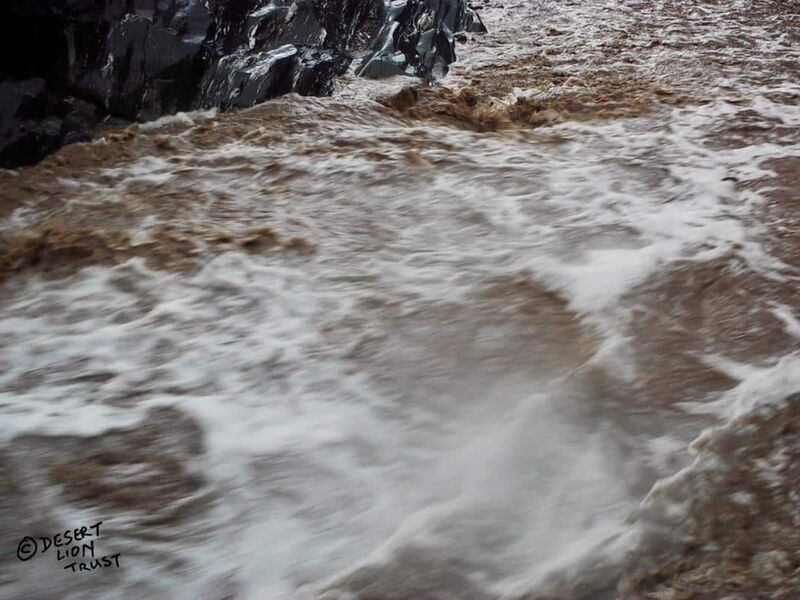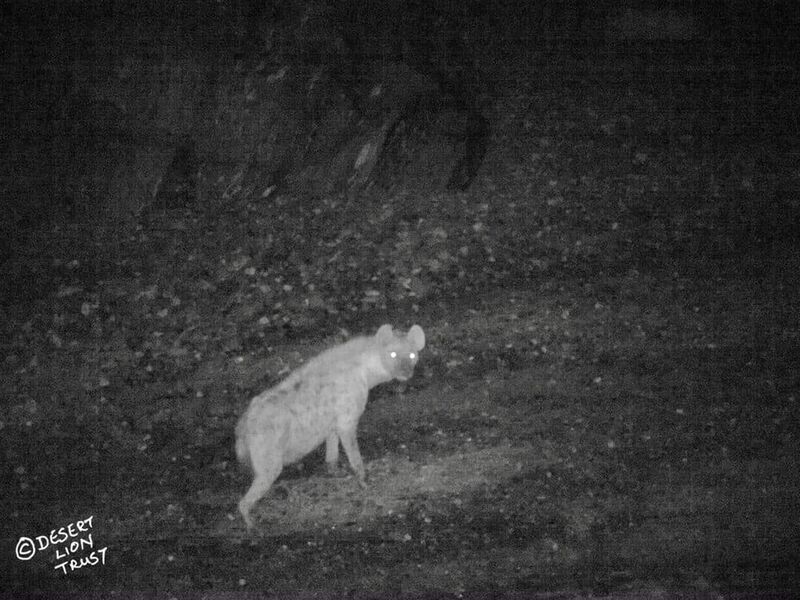Survey and Monitoring
Saturday 15 May 2021
Extensive rain showers that reached some of the more barren parts of the Skeleton Coast National Park late in the rainy season may have turned the tables for the wildlife populations. But is is yet unclear how broadly and how much precipitation the desert received and how quickly the wildlife and lion populations will recover from the hyper-arid conditions that prevaled. The Ministry of Environment, Forestry and Tourism (MEFT) initiated a survey on the status and condition of the desert-adapted lion population, the distribution and abundance of prey animals and livestock, and the recent rainfall patterns. This is a collaborative effort between MEFT, Desert Lion Conservation, IRDNC and the Lion Rangers, with support from TOSCO.
Uniab River
Three lionesses from the Obab Pride were located near the Uniab Delta. Although they were in average condition, they were lean and exhausted from their failed efforts to find prey. Three days later they killed an adult male gemsbok in thick fog close to the mouth of the Union river. They spent two days feeding on the carcass and their condition improve markedly. A few days later they captured another gemsbok on the edge of the dune-belt.
Hungry lionesses search for prey at the Uniab delta
Lionesses kill gemsbok in thick fog at the Uniab delta
Lioness feeding on the last remains of a gemsbok kill at the Uniab delta
Three lionesses continue searching for prey at the Uniab delta
Hunkab River
On 10 May 2021 the Ministry of Environment, Forestry and Tourism received a report and photos of an emaciated lioness near Hunkap spring. Two days later the lioness (Xpl-84) was located 12km further east. Based on the severity of her condition, MEFT decided to provide her with a springbok carcass to gain some strength before attempting to relocate her to Naankuse in central Namibia. During the next few days Xpl-84 made a remarkable recovery – she was joined by a lioness (Xpl-95) from the neighbouring pride, shared her springbok with the lioness, and eventually bonded with Xpl-95. This information and the likelihood that Xpl-84 could make a full recovery was provided to MEFT and they decided that she can remain in the area. Her movements and association with Xpl-95 will be monitored closely during the following months.
Emaciated lioness (Xpl-84) showing signs of recovery near Hunkap spring
Darting and fitting a new satellite collar to a Hunkap lioness
Lioness (Xpl-84) bonding with a female from a neighbouring pride (Part 1)
Lioness (Xpl-84) bonding with a female from a neighbouring pride (Part 2)
General
The hyper-arid conditions have resulted in unusual movements of animals deep into the western more arid area of the Skeleton Coast Park. A spotted hyaena was observed on the gravel plains south of the Hoanib Floodplain and the tracks of a single spotted hyaena was observed at the Koigab Cape fur seal colony. A camera-trap captured a flash-flood through a narrow gorge at the upper Mudorib spring during the early morning hours on 2 May 2021. The floodwaters reached the Hoanib Floodplain, 65km further downstream, approximately 18 hours later.
Spotted hyaena in the Skeleton Coast National Park
Floodwaters gushing through a narrow gorge at the upper Mudorib spring

Spotted hyaena at the upper Mudorib spring

Pied crows harass immature Pale chanting goshawk with three lionesses watching on
Humpback whale breaching at the mouth of the Koigab river
